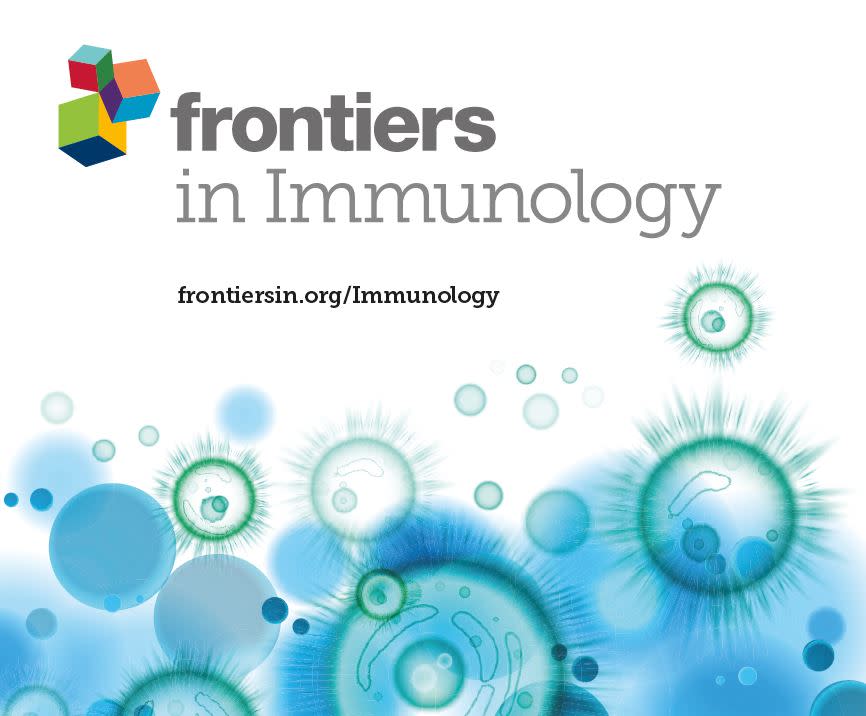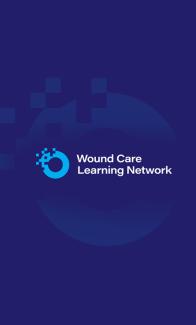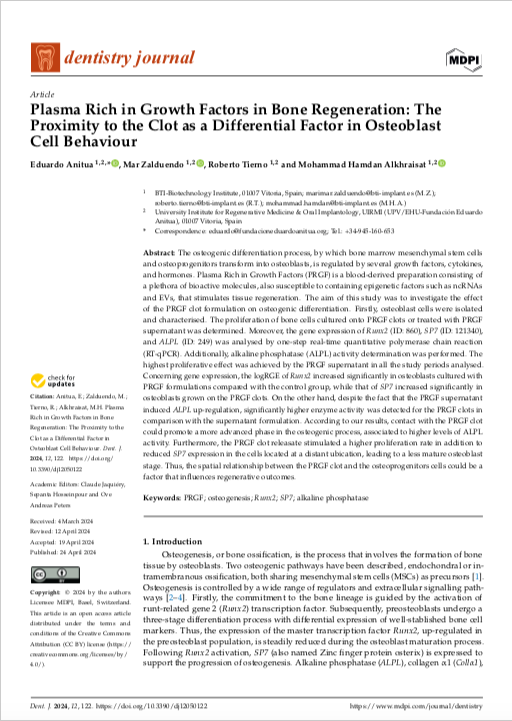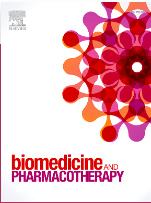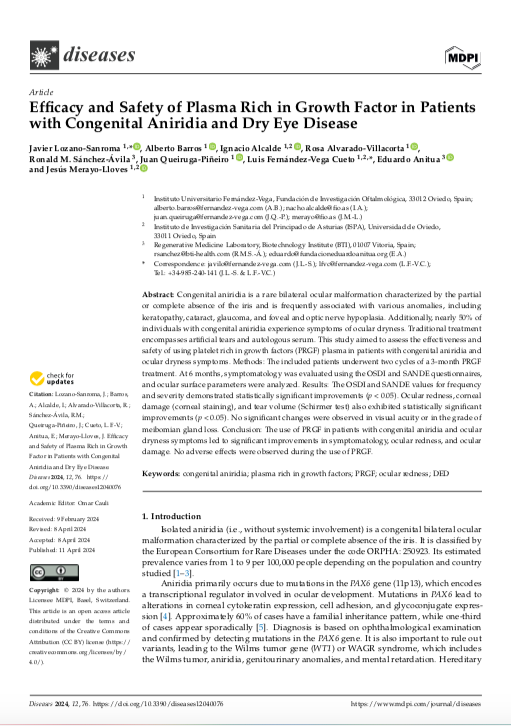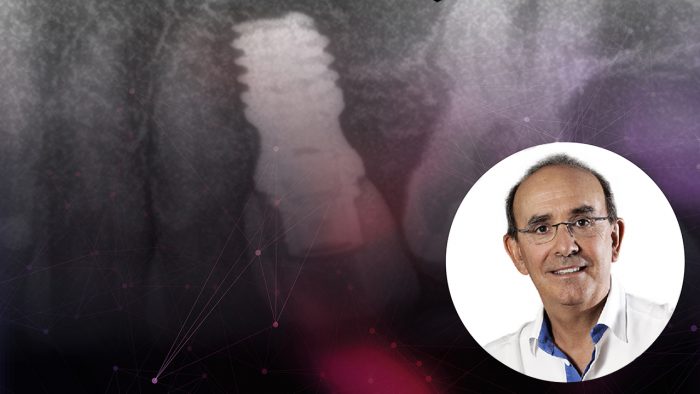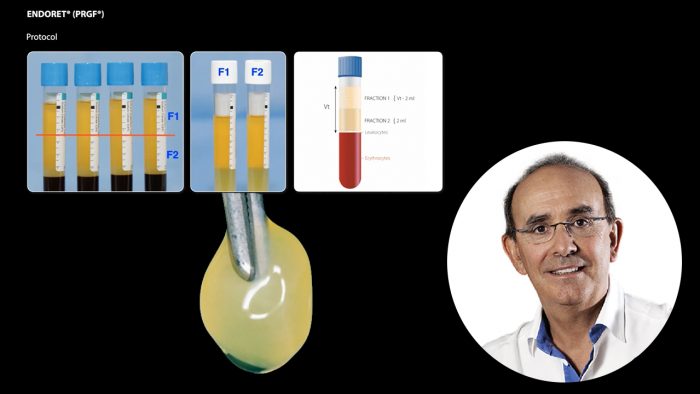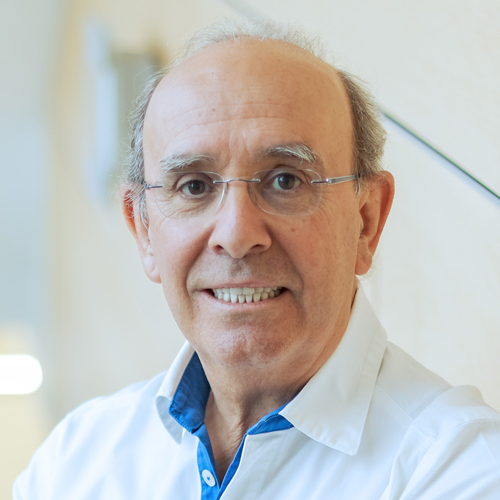
Eduardo Anitua
MD, DDS, PhD
Leiter des Instituts Eduardo Anitua, Institut für grundlagenorientierte und angewandte Forschung und klinisches Zentrum sowie Schulungszentrum in oraler Implantologie und regenerativer Therapie. Wissenschaftlicher Leiter am BTI (Biotechnology Institute).
Veröffentlichte artikel
- Autor:
- Eduardo Anitua
- Troya M
- Alkhraisat MH.
Immunoregulatory role of platelet derivatives in the macrophage-mediated immune response
Macrophages are innate immune cells that display remarkable phenotypic heterogeneity and functional plasticity. Due to their involvement in the pathogenesis of several human conditions, macrophages are considered to be an attractive therapeutic target. In line with this, platelet derivatives have been successfully applied in many medical fields and as active participants in innate immunity, cooperation between platelets and macrophages is essential. In this context, the aim of this review is to compile the current evidence regarding the effects of platelet derivatives on the phenotype and functions of macrophages to identify the advantages and shortcomings for feasible future clinical applications.
- Autor:
- Eduardo Anitua
- Pino A
- Alkhraisat MH
Efficacy of Plasma Rich in Growth Factors for Healing Chronic Skin Ulcers: A Systematic Review of Randomized Controlled Trials With Meta-Analysis
Chronic skin ulceration is a serious pathological condition for which the adjuvant use of platelet-rich plasma (PRP) has been indicated. However, evidence for the use of PRP in patients with chronic skin ulcers remains insufficient due to a large heterogeneity in experimental designs, PRP composition, and preparation protocols.
- Autor:
- Eduardo Anitua
- Zalduendo M
- Tierno R
- Alkhraisat MH
Plasma Rich in Growth Factors in Bone Regeneration: The Proximity to the Clot as a Differential Factor in Osteoblast Cell Behaviour
Dent J (Basel). 2024 Apr 24;12(5):122. The osteogenic differentiation process, by which bone marrow mesenchymal stem cells and osteoprogenitors transform into osteoblasts, is regulated by several growth factors, cytokines, and hormones. Plasma Rich in Growth Factors (PRGF) is a blood-derived preparation consisting of a plethora of bioactive molecules, also susceptible to containing epigenetic factors such as ncRNAs and EVs, that stimulates tissue regeneration. The aim of this study was to investigate the effect of the PRGF clot formulation on osteogenic differentiation. Firstly, osteoblast cells were isolated and characterised. The proliferation of bone cells cultured onto PRGF clots or treated with PRGF supernatant was determined.
- Autor:
- Eduardo Anitua
- Troya M
- Zalduendo M
- Tierno R
- Alkhraisat MH
- Osinalde N
- Fullaondo A
- Zubiaga AM
Improving the mechanical and biological functions of cell sheet constructs: The interplay of human-derived periodontal ligament stem cells, endothelial cells and plasma rich in growth factors
Biomed Pharmacother. 2024 May:174:116599. The aim of this study was to produce and characterize triple-layered cell sheet constructs with varying cell compositions combined or not with the fibrin membrane scaffold obtained by the technology of Plasma Rich in Growth Factors (mPRGF).
- Autor:
- Eduardo Anitua
- Lozano-Sanroma J
- Barros A
- Alcalde I
- Alvarado-Villacorta R
- Sánchez-Ávila RM
- Queiruga-Piñeiro J
- Cueto LF
- Merayo-Lloves J
Efficacy and Safety of Plasma Rich in Growth Factor in Patients with Congenital Aniridia and Dry Eye Disease
Diseases. 2024 Apr 11;12(4):76. Congenital aniridia is a rare bilateral ocular malformation characterized by the partial or complete absence of the iris and is frequently associated with various anomalies, including keratopathy, cataract, glaucoma, and foveal and optic nerve hypoplasia. Additionally, nearly 50% of individuals with congenital aniridia experience symptoms of ocular dryness. Traditional treatment encompasses artificial tears and autologous serum. This study aimed to assess the effectiveness and safety of using platelet rich in growth factors (PRGF) plasma in patients with congenital aniridia and ocular dryness symptoms.
Videos available on BTI Channel
In addition to this small sample, on BTI Channel you can increase your knowledge about oral implantology, regenerative medicine and sleep apnoea.

 Español
Español
 English
English
 Français
Français
 Italiano
Italiano
 Português
Português


